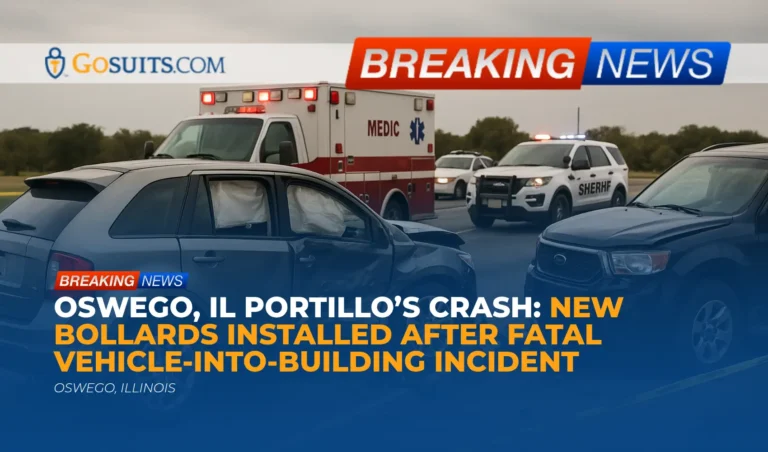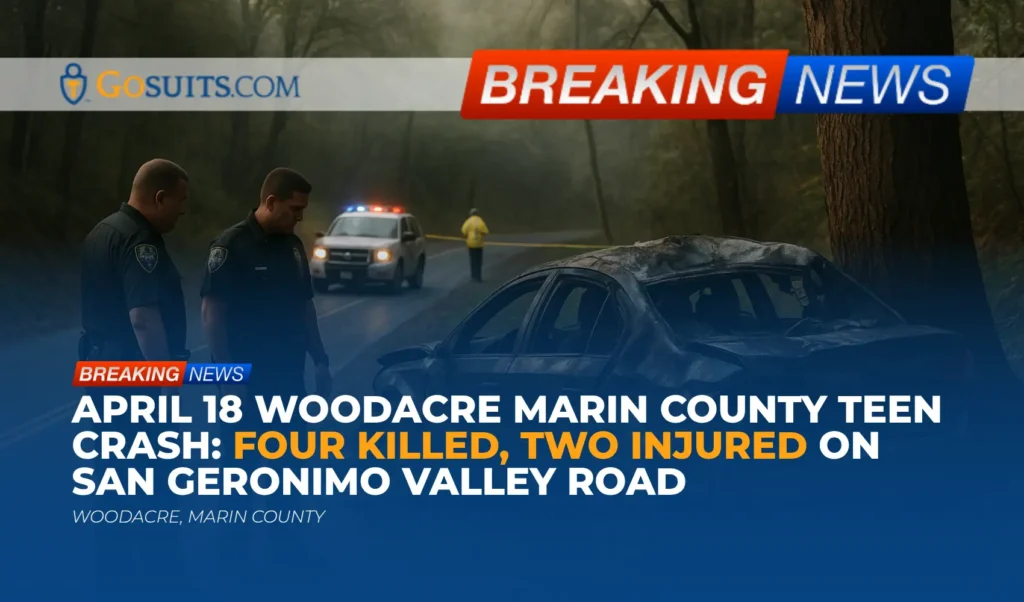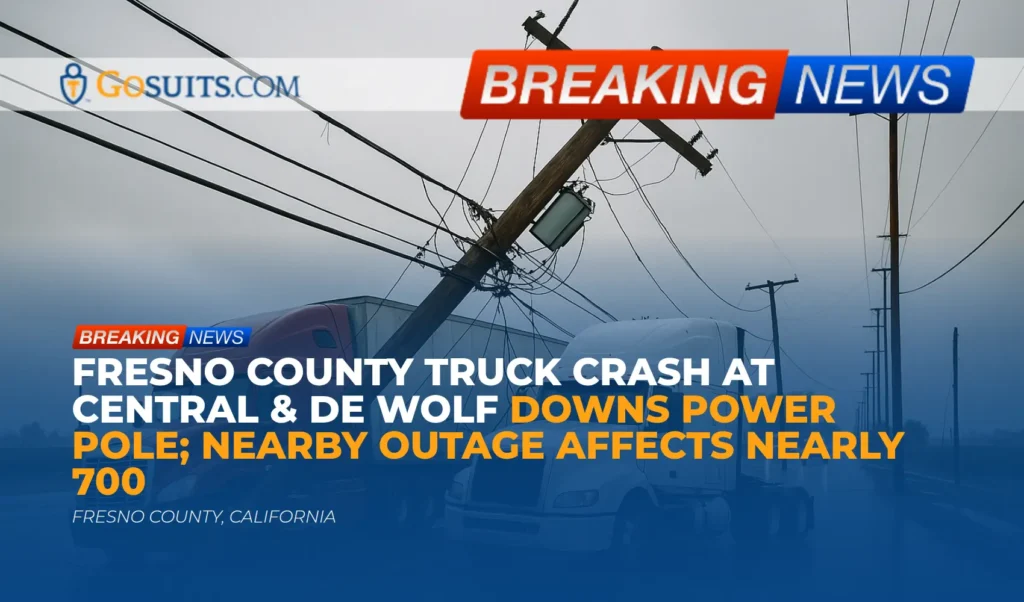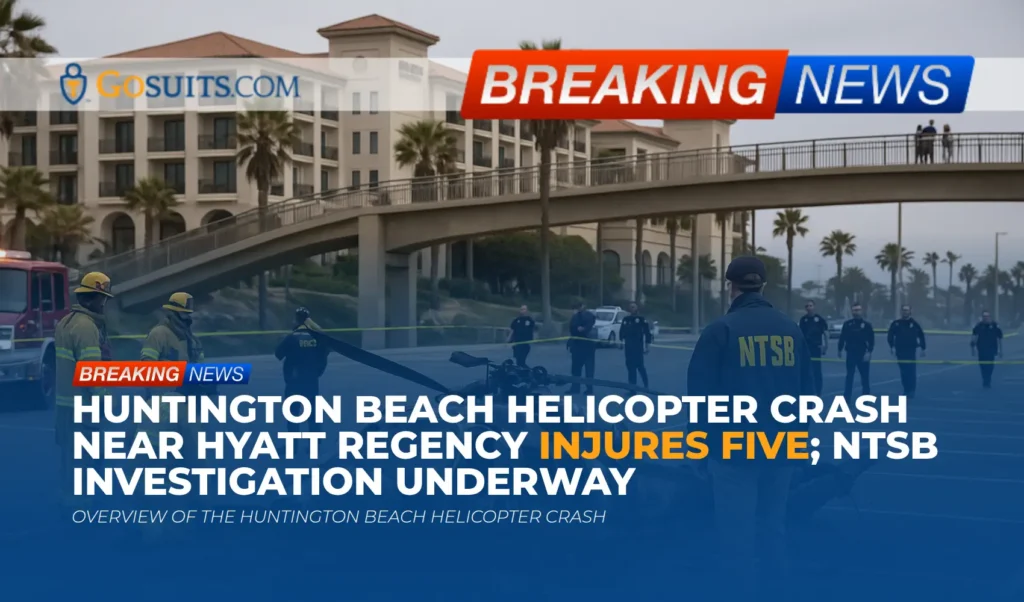- What we know now about the Oswego Portillo’s crash and the new bollards
- Where and when it happened
- Why vehicle-into-building crashes matter and how barriers reduce risk
- Potential civil liability and safety duties in Illinois
- Key records to request and where to obtain them in Oswego and Kendall County
- Insurance and claims considerations after a vehicle-into-building crash
- Practical steps to help preserve rights and evidence
- Safety improvements and community prevention efforts
- Commentary from Gosuits Oswego, Illinois Personal Injury Attorney
- Important next steps and timelines
What we know now about the Oswego Portillo’s crash and the new bollards
In July, a vehicle crashed through the front entrance of a Portillo’s restaurant in Oswego, Illinois. A 2-year-old child was tragically killed and several other people were injured. According to initial police statements reported publicly, the crash appeared to be an accident. In the months following the incident, new protective posts, commonly called bollards, were installed in front of the restaurant. News video captured the installation of these barriers, which are intended to prevent or reduce the likelihood of a vehicle entering the building in a similar manner in the future.
At this time, the public reporting emphasizes two key points: first, the severe harm caused by a vehicle leaving the parking area and entering a customer space; and second, the subsequent installation of physical barriers intended to create a stronger separation between cars and pedestrians at the building’s entrance. No additional details about fault determinations, the specific driver actions, or the final police reconstruction have been shared publicly in the materials summarized here. It is normal for investigations to take weeks or months as agencies review scene evidence, statements, camera footage, and any available technical data.
Families affected by such an event face immeasurable loss and disruption. For community members and other patrons who witnessed the crash or its aftermath, the emotional impact can also be significant. While this overview focuses on safety, civil liability, and public information resources, it is written with respect for everyone affected by this tragedy.
Where and when it happened
The incident occurred in Oswego, a community in Kendall County, Illinois. Public reporting places the crash in July, during summer months when restaurants often experience heavy foot traffic and frequent vehicle turnover in parking areas and pickup lanes. The new bollards were installed on a Monday in mid-October and are visible along the frontage of the restaurant’s main entry doors in aerial and street-level footage shared by local media.
Typical features of quick-service or fast-casual restaurant sites include short head-in parking near storefronts, busy entrances, and drive-through circulation. These layouts can compress pedestrian and vehicle paths into close proximity. Without adequate spacing, curbing, or protective posts, even a low-speed vehicle can traverse from a parking stall into a storefront or entry path.
Why vehicle-into-building crashes matter and how barriers reduce risk
Crashes where a vehicle leaves a travel lane or parking space and strikes a building or pedestrians occur in what safety researchers call non-traffic environments, such as driveways, private parking lots, or private property. The National Highway Traffic Safety Administration maintains a Not-in-Traffic Surveillance program to analyze these events, which happen off public roadways and include vehicle strikes to people and fixed objects on private property. The agency notes that these incidents occur in diverse settings including parking facilities and driveways, and they track injuries and fatalities arising from them. See NHTSA’s overview of the Not-in-Traffic Surveillance program at nhtsa.gov/research-data/not-in-traffic-surveillance-nts.
When a storefront or seating area is just a few feet from head-in parking, everyday errors like pedal confusion, unintended acceleration, distraction, or medical episodes can have severe consequences. The physics are unforgiving: even at low speeds, the mass of a vehicle can impart high force to glass, doors, and anyone inside the impact path.
How bollards and barriers work
Protective barriers such as bollards are a recognized method to help separate pedestrian spaces from vehicle movement areas. Federal guidance documents describe how selecting and placing fixed barriers can mitigate vehicle incursions into buildings and crowds. For example, FEMA’s publication on site and urban design for security explains concepts for identifying vehicle approach paths and establishing protective perimeters with appropriate barrier types and spacing. See FEMA 430, Site and Urban Design for Security, Parts 1 and 2, available at fema.gov/sites/default/files/2020-07/fema430-part1.pdf and fema.gov/sites/default/files/2020-07/fema430-part2.pdf.
Additional federal security planning resources discuss countermeasures to vehicle intrusion for public venues and crowded spaces, including the use of bollards and other fixtures to slow, stop, or deflect vehicles approaching pedestrian areas. See the Cybersecurity and Infrastructure Security Agency’s resources for crowded places and vehicle ramming mitigation at cisa.gov. While not every retail site requires high-threat countermeasures, the general safety principle applies: greater separation and appropriately rated barriers can reduce the likelihood and severity of a vehicle entering a building.
Notes on barrier selection and placement in everyday retail settings:
- Separation distance matters. More space between parked vehicles and entries gives drivers time to correct and reduces impact energy by increasing stopping distance.
- Continuous protection. A single post may not address all approach angles. A line of posts with appropriate spacing can account for steering drift or angled approaches.
- Rated performance. Where feasible, property owners may consider bollards tested to recognized standards for low-speed storefront impacts. Consultation with qualified engineers and code officials can help determine what is reasonable for the site.
- Complementary design. Curbs, wheel stops, landscaped buffers, and rerouted pedestrian paths can complement bollards to further separate vehicles and people.
Potential civil liability and safety duties in Illinois
Every crash is unique. The following general principles describe common civil law considerations in Illinois for vehicle-into-building incidents. These points are educational and are not a substitute for individualized guidance on any specific matter.
- Driver negligence. A driver who fails to exercise reasonable care and causes harm may be legally responsible for injuries and losses. Examples can include distraction, pedal misapplication, or other lapses in ordinary care. Liability turns on the facts developed through investigation.
- Premises liability. Illinois’ Premises Liability Act, 740 ILCS 130, imposes a duty on property owners and occupiers to maintain their premises in a reasonably safe condition for people lawfully on the property and to warn of or address reasonably foreseeable hazards. In the context of storefronts and entries adjacent to parking areas, courts may examine whether particular protective measures were reasonable under the circumstances. The presence or absence of barriers is one factor among many, including site layout, traffic patterns, prior incidents, and foreseeable risks.
- Corporate and contractor responsibilities. Depending on the site’s ownership, leasing, and construction arrangements, multiple entities may share responsibility for the design, installation, and maintenance of safety features. Responsibilities can be shaped by leases, maintenance agreements, and building codes.
- Comparative negligence. Illinois follows a modified comparative negligence framework, 735 ILCS 5/2-1116. If more than one party’s conduct contributed to the harm, a jury may apportion fault. A claimant who is more than 50% at fault is generally barred from recovery; otherwise, damages may be reduced by the claimant’s percentage of fault.
- Wrongful death and survival claims. Illinois allows wrongful death claims by the personal representative of the deceased on behalf of the next of kin under the Wrongful Death Act, 740 ILCS 180. Related claims for the decedent’s conscious pain and suffering or other damages that accrued before death are generally brought under the Survival Act, 755 ILCS 5/27-6.
- Deadlines. Filing deadlines vary. The general limitations period for personal injury is two years, 735 ILCS 5/13-202, and wrongful death actions are generally to be commenced within two years of death, 740 ILCS 180/2. Claims involving governmental entities may carry different deadlines, including a one-year period for certain claims under the Tort Immunity Act, 745 ILCS 10/8-101. Because exceptions exist, prompt evaluation is important.
Whether a given property condition was unreasonably dangerous is a fact-intensive question. The later installation of safety measures such as bollards does not, by itself, determine legal responsibility for prior events, but it can be relevant to understanding risk and prevention going forward.

Key records to request and where to obtain them in Oswego and Kendall County
Accurate documentation helps families understand what happened and supports any potential civil claim. Below are common records and how they are typically obtained in Oswego and Kendall County. Availability and timing can vary, and some materials may be withheld or redacted while investigations are active.
- Police crash report and incident records. For crashes investigated by the Oswego Police Department, request the crash report and any related incident narratives, diagrams, or photos from the department’s records unit. Illinois agencies process public records under the state Freedom of Information Act (FOIA), 5 ILCS 140. Visit the Village of Oswego Police Department page to locate records and FOIA request instructions: oswegoil.org/police. If another agency assisted, clarify which department is the custodian of the primary crash report.
- 911 audio and CAD logs. Emergency call recordings and dispatch logs can sometimes be requested via FOIA from the Oswego Police Department or the regional dispatch center identified by the police. These records can document timing, initial observations, and response details.
- Surveillance video. Many restaurants have exterior and interior cameras. This footage is typically held by the business. Preservation is time-sensitive, as many systems overwrite within days or weeks. A written preservation request should be sent as soon as possible. Where police collected video, inquire whether copies are releasable after the investigation stage.
- Photographs and scene measurements. If the investigating agency prepared a diagram or took measurements, ask the records unit about availability. In serious crashes, agencies sometimes retain a reconstructionist; those materials, if any, may be part of the investigative file.
- Coroner records. In Kendall County, the coroner conducts death investigations and maintains records that may include autopsy and toxicology reports. Next of kin can inquire with the Kendall County Coroner’s Office about requesting records and typical timelines: kendallcountyil.gov/departments/coroner. Statutes governing coroner duties are found in the Counties Code, and release practices may vary by case and stage of investigation.
- Death certificate. Certified death records in Illinois are issued through the Illinois Department of Public Health (IDPH) or local vital records offices. Eligibility and application instructions are outlined by IDPH: dph.illinois.gov/topics-services/birth-death-other-records/death-records.html.
- Medical records and bills. Hospitals, emergency services, and treating providers are the custodians of these records. Next of kin or authorized representatives can request records through each provider’s medical records department. It is helpful to request itemized bills along with medical records, as insurers often require both.
- Vehicle data. Some vehicles store event data in an Event Data Recorder (EDR). Accessing this data generally requires specialized tools and, in some cases, consent or a court order. Ask investigating officers if EDR data was downloaded.
Additional support resources that may be relevant include the Illinois Attorney General’s Victim Services information, which explains rights and certain assistance available to crime victims and survivors even when a criminal case is not the focus of a family’s immediate questions: illinoisattorneygeneral.gov/victims/. For those seeking emotional support, the 988 Suicide and Crisis Lifeline is available nationwide; information is provided by SAMHSA at samhsa.gov/find-help/988. These services do not replace legal or medical guidance, but they may help during a difficult time.
Insurance and claims considerations after a vehicle-into-building crash
Vehicle-into-building incidents can involve several layers of insurance. Understanding which policies may apply and how claims are coordinated is important. Before contacting any insurance company to provide a statement, it is wise to consult with an attorney for a free consultation about rights and risks. What someone says to an insurer can be recorded and may be used against them later.
- Auto liability insurance. The driver’s auto liability policy is often the first source of coverage for bodily injury and wrongful death caused by negligent driving. Insurers will evaluate fault based on the evidence, and they may request recorded statements from witnesses or injured persons.
- Commercial general liability (CGL). The restaurant or property owner may carry CGL coverage that addresses injuries on the premises arising from unsafe conditions or inadequate safeguards. The applicability of CGL coverage depends on the policy language and the facts of the incident.
- Medical payments coverage. Some businesses carry medical payments coverage that can help with initial medical expenses regardless of fault, subject to policy limits and terms. Acceptance of such payments can have implications for later settlements, so seek advice before signing releases.
- Umbrella and excess policies. Either the driver or the business may have additional layers of liability coverage. Identifying these requires careful inquiry.
- Health insurance and subrogation. When health insurance pays medical bills, the insurer may assert a reimbursement claim from any later recovery. Understanding subrogation and lien rights is important during settlement discussions.
Insurance companies and large corporate policyholders have established procedures to minimize payouts. Early offers can be made before full information is known. Documentation, careful communication, and early legal guidance can help ensure that decisions are informed and that rights are preserved.
Practical steps to help preserve rights and evidence
Time is critical when gathering evidence and protecting potential claims. The following steps are general suggestions for people involved in similar incidents. Specific situations may require additional actions.
- Ask for a free legal consultation before giving statements. Insurance adjusters may request recorded statements. Speaking with an attorney first can help avoid misstatements or incomplete descriptions that could be used to challenge a claim later.
- Send preservation letters. Written requests to the business and any third parties should ask that surveillance video, maintenance logs, incident reports, and related materials be preserved. Many systems overwrite within days.
- Collect witness information. Names, phone numbers, and brief summaries of what witnesses observed can be vital. If police took statements, reference the report number.
- Document the scene. If safe to do so, photograph vehicle positions, storefront damage, skid marks, and the layout of parking stalls and entry paths. Later alterations like barrier installation can change how the area looks.
- Track medical care and expenses. Keep discharge papers, imaging results, prescriptions, and itemized bills. Note time missed from work and other out-of-pocket costs.
- Avoid posting details on social media. Public posts can be misconstrued or taken out of context by insurers and defense counsel.
- Follow up with agencies. Check with the police department and, where applicable, the coroner for estimated timelines on report availability and release procedures.
Safety improvements and community prevention efforts
Protecting people near building entrances is a shared concern among property owners, tenants, designers, and local officials. Several prevention themes recur in federal guidance and safety literature.
- Site planning. Where feasible, orient parking so that vehicles do not point directly at entrances, or provide deeper setbacks between head-in parking and doors. FEMA’s site and urban design guidance offers principles for establishing protective standoff distances appropriate to anticipated risks: fema.gov/sites/default/files/2020-07/fema430-part1.pdf.
- Physical barriers. Install continuous lines of bollards or other fixed barriers at vulnerable frontage locations, especially where pedestrian queues and seating are present. Selection should consider expected vehicle speeds, site geometry, and compatibility with accessibility and emergency egress needs. See resources at cisa.gov for general considerations on reducing vehicle intrusion risks in public areas.
- Operational measures. Manage curbside pickup and drive-through lanes to reduce conflicts near doors. Clear signage, speed control in lots, and staff awareness can help.
- Maintenance. Ensure barriers remain properly anchored and undamaged. Replace or repair compromised devices promptly.
The installation of bollards at the Oswego restaurant is a visible example of a post-incident safety measure. While no single measure eliminates risk, layered protections and thoughtful site design can reduce the likelihood and severity of vehicle incursions into pedestrian spaces.

Commentary from Gosuits Oswego, Illinois Personal Injury Attorney
Our hearts are with the family of the child who died, the people who were injured, and everyone touched by this catastrophic crash. This article is offered for educational and general informational purposes, and it is not a substitute for guidance on any specific situation.
From a civil injury perspective, a vehicle crossing from a parking stall into a storefront highlights two intertwined safety questions: what happened with the driver, and whether the property’s layout and protective features reasonably accounted for foreseeable risks at a busy entrance. Illinois law looks at reasonable care by drivers and reasonable safety by property owners and operators. Post-incident installation of bollards in front of this location underscores how physical separation between vehicles and pedestrians can reduce risk. Determining legal responsibility, however, requires a careful examination of the evidence, including site design, prior incidents if any, available video, and the driver’s actions.
In the aftermath of tragedies like this, insurance companies and corporate defendants often move quickly to shape the narrative. Adjusters may seek recorded statements before all facts are known, ask for broad releases in exchange for early payments, or rely on technical language in policies to limit payouts. Many people have never navigated a serious injury or wrongful death claim and may not realize how each document, statement, or social media post can affect the outcome. Having a seasoned advocate explain the process and the practical implications of each decision can help level the playing field.
A free consultation is important because it gives individuals a chance to understand their rights, potential timelines, necessary documentation, and common pitfalls before speaking with insurers. Even if someone ultimately decides not to pursue a claim, a conversation focused on education can help them avoid missteps that could restrict options later.
Important next steps and timelines
Taking timely, informed action can make a meaningful difference after a serious crash. The following points describe what to do, why it matters, and when it should happen.
- Request essential records promptly. Obtain the police report, incident narratives, and, when available, any scene diagrams. Ask the Kendall County Coroner about the status of any autopsy or investigative findings and how to request records. Early documentation captures facts while they are freshest and supports insurance notifications and future evaluations.
- Secure video and physical evidence. Send written preservation requests to the business and any known third parties for surveillance footage, maintenance logs, and incident reports. Many systems overwrite quickly. Acting within days rather than weeks significantly increases the chance that critical video is saved.
- Consult an attorney before speaking to insurers. Initial calls with insurance companies may be recorded. Statements, even when made in good faith, can be misinterpreted or used to minimize claims. A short, free consultation can clarify what should be shared and when, and can help set a strategy for managing multiple insurers.
- Track medical care and costs. Maintain a folder with hospital charts, imaging, discharge instructions, follow-up care notes, and itemized bills. Detailed records support health insurance processing and any later reimbursement discussions.
- Mark critical deadlines. Illinois generally allows two years for most personal injury and wrongful death filings, with important variations and shorter periods for some claims against public entities. Because exceptions exist, documenting a timeline and getting an early legal assessment reduces the risk of missing a deadline.
- Focus on well-being. Seek appropriate medical and emotional support. Community and public resources can help, including information provided by the Illinois Attorney General’s Victim Services program at illinoisattorneygeneral.gov/victims/ and crisis support information at samhsa.gov/find-help/988.
Urgency matters because evidence and memories fade, video can be lost, and certain notices or filings have strict timeframes. Early, steady steps informed by accurate information tend to produce clearer understanding and better-protected rights.






